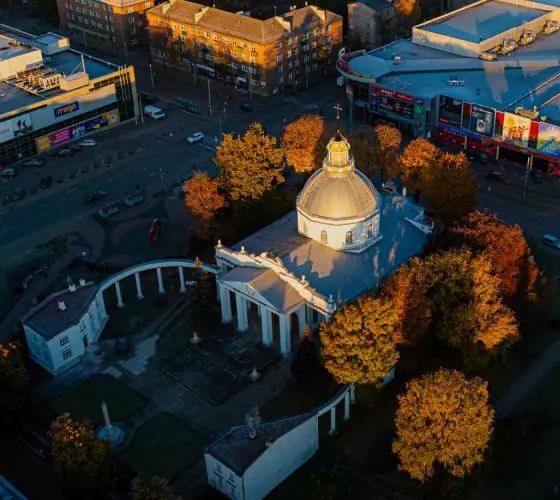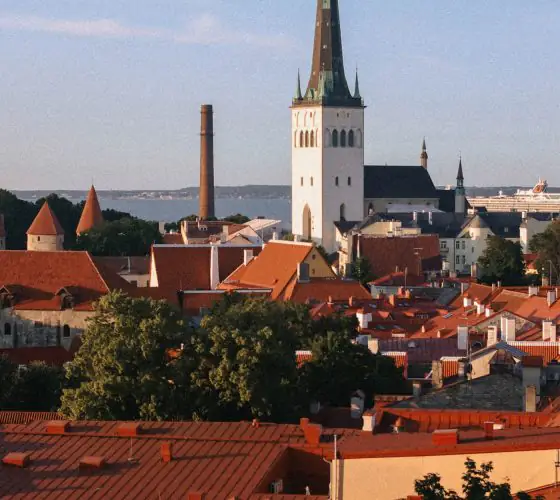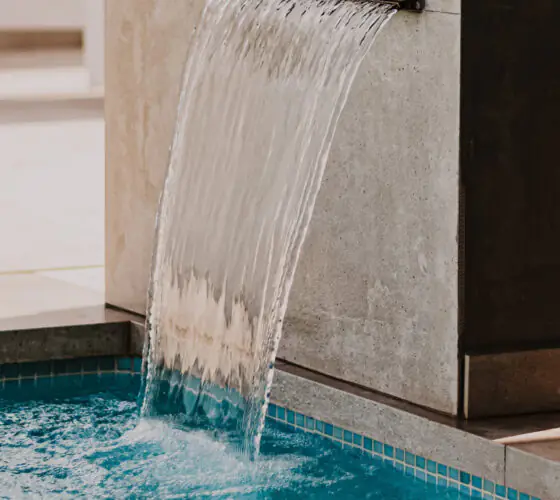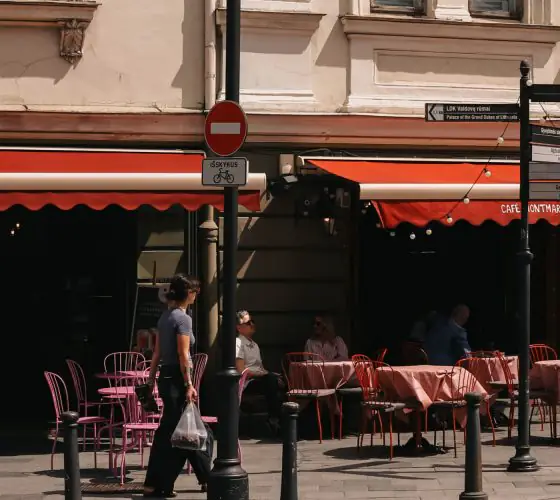
facebook.com/rumenesmuiza
Latgale and Vidzeme estates
Malpils manor
The Malpils manor is a unique estate which is located only 18 km from Sigulda. The original building of this place was built in the second half of the XIV century. Unfortunately, it has not been preserved – it burned down during a great fire at the beginning of the last century. However, the reconstruction of the estate was carried out so carefully and accurately that it seems as if nothing happened.
In 2008, it became a hotel. Eighteen rooms, canopies over the beds, a huge fireplace and a Baroque park. In summer, delicate lilies bloom in the park pond.

facebook.com/MalpilsMuiza

facebook.com/MalpilsMuiza

facebook.com/MalpilsMuiza

facebook.com/MalpilsMuiza
Luznava manor
This estate is also known as the “Latgalian pearl” of Art Nouveau. It was built at the beginning of the XX century. Writers, artists, sculptors and musicians gathered here to reflect on philosophy and talk about art.
Luznava manor is a vivid example of the romantic style – Art Nouveau, which embodies all the trends of European architecture and art of the last century.
During its 100-year history, Luznava estate was a school, a military headquarter, a local area administration and even a library.
Only in 2015, this manor was opened to the public. Now, the estate is used to conduct lot of exhibitions, lectures, master classes and excursions. Wedding ceremonies are also held here (no estate can exist without weddings).
Arendole manor
Arendole manor is located close to Daugavpils, on the banks of the Dubna river.
At the beginning of the twentieth century, this estate belonged to a well-known family but a lot has changed since. In 1977 the estate was closed. It stood abandoned for a long time, until 2001 when it was bought by the Turlays family. From that moment on, the estate was carefully restored. Interestingly, the furniture has been preserved in perfect condition – it is a great piece of the authentic past of Latgalian estates.
Nowadays, you can rent a room in the Arendole estate, to spend time in the countryside, surrounded by luxurious interiors.
Address: Preiļu novads, Arendole, Arendoles muiža, Rožkalnu pagasts

facebook.com/luznavasmuiza

facebook.com/luznavasmuiza

facebook.com/luznavasmuiza
Kurzeme manors
Dairy Manor Berghof
The history of the Berghoff estate began in the XIV century. However, the estate became “dairy” only in the early 2000s. Now, it is one of a kind milk museum in Latvia, where adults and children are introduced to the history of milk and the preparation of dairy products.
As a result of the agrarian reform, at the beginning of the XX century, the owners of the estate lost their property and the estate was renamed as Kalnmuizhu. For quite a while, an elementary school was held here but after some time it was transformed into a recreation centre. Although the estate survived several fires and was severely destroyed, at the beginning of the XXI century it was restored.
Today, you can not only rent a hotel room at the Berghoff estate but also enjoy a high-quality lunch in a restaurant that serves dishes from products which are being grown in the garden. During your stay, make sure not to miss an opportunity to visit a sauna and a milk museum.
Address: Sieksāte, Piena muiža – Berghof

balticmeetingrooms.com
Skrunda Manor
One of the oldest Latvian estates – Skrunda Manor – is located on the banks of the Venta River.
The main thing that distinguishes this estate from many others is the exposition dedicated to the Skrunda radar station and the Latvian National Front. This station warned of a Soviet missile attacks in the western sector.
You can also stay in the Skrunda manor for several nights. Twelve rooms and a stunning view from the window will not disappoint you.
Address: Skrundas novads, Pils iela 2

facebook.com/SkrundaManor
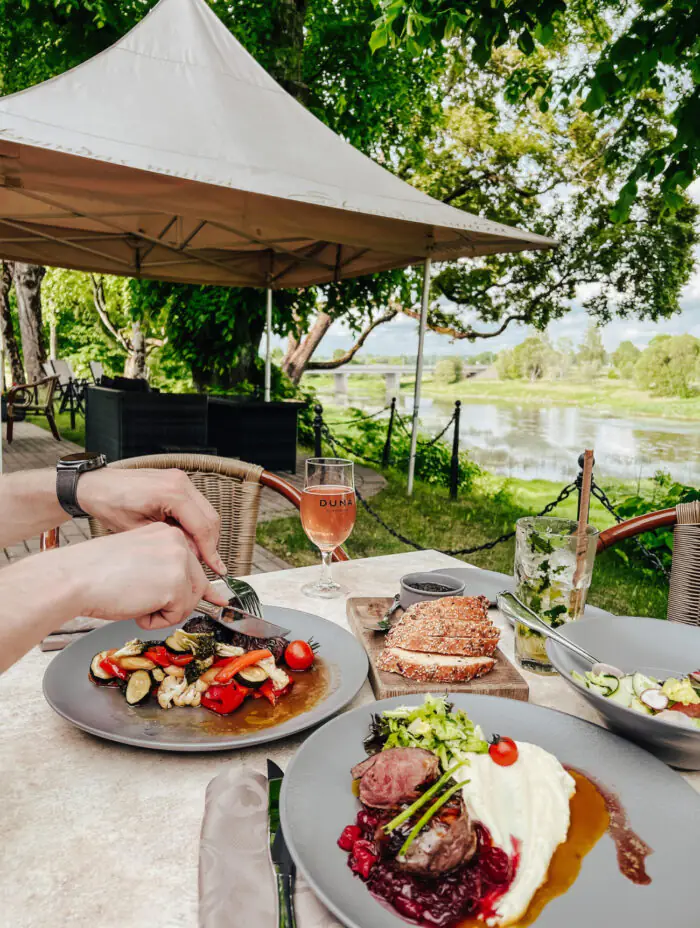
facebook.com/SkrundaManor

facebook.com/SkrundaManor

wikimedia.org
Zentene manor
Zentene estate is a striking example of late classic embelishments: huge scale, giant columns, porticos and an abundant coat of arms in the pediment. However, it is also a sample of an abandoned estate.
The estate was built in the middle of the XIX century but was abandoned by its owners in 1939. Later, the school was located here, which was closed quite recently – in 2009. After all of this, the estate was bought but not restored. Now, it is just lonely standing there.
Interesting fact: the thickest yew tree in Latvia grows in front of this estate – almost 2.5 metres in diameter.
Popes manor
This hunting castle is located behind the pond with fortified banks. It was built in the XVII century. Long time ago, the kitchen building was attached to the main manor. It was rebuilt many times and as a result, the estate now has many large glass windows and a Neo-Gothic porch.
The Lopes estate has preserved a beautiful wooden staircase which leads to the second floor, an eighteenth-century interior, a wooden ceiling, a classical-style entrance door and a Rococo oven. You must definitely have a look!
Rumene manor
Citizens who are coming here can not only enjoy the scenery but also try out the Latvian bath ritual with an experienced bath attendant in a bathhouse on the lake shore. The castle is located on a small hill, and at the foot, under the main facade, there is a system of stairs and terraces. According to the architects, this system of terraces is considered a rarity because it is a unique example of neo-Renaissance style buildings in Latvia.

facebook.com/rumenesmuiza

facebook.com/rumenesmuiza

facebook.com/rumenesmuiza
Jaunauce manor and castle
The Jaunauce estate is located in the Jaunauce parish of the Saldus region. For more than 100 years, the castle was the ancestral estate of the von der Rop barons, but later it was converted into a school. This estate built in the ХIХ century is a good example of the Empire style in Latvia. There is something that you will not see anywhere else – the only dome painting in Latvia! The castle also has Latvia’s largest collection of ХIХ century stoves. The estate itself is surrounded by a huge park with imported trees, shrubs and a beautiful canal.
Address: Jaunauces pagasts, Saldus novads

redzet.eu

redzet.eu
Nurmuiza manor
Despite the fact that the estate is privately owned, visitors have the opportunity to explore this magnificent building. This is one of the largest estate complexes in Latvia. The manor was built on the site of an old castle at the end of the 16th century. At the beginning of the nineteenth century, a high tower was added to the estate, as well as a large-scale reconstruction was carried out under the direction of architect Wilhelm Boxlaf. The premises of this complex are one of the best examples of neoclassical interiors in Latvian castles.

visittalsi.com
Zemgale manors
Abgunste manor
The manor was built in the XVIII century but was burned down later during the riots. The renovation was completed in 1931 and culminated in the establishment of the Abgunste School. Nowadays, the estate has become a place for art. Creative events, art exhibitions and seminars are organised here.
Address: Zalenieku pagasts, Jelgavas novads, Abgunstes skola

abgunste.lv

abgunste.lv
Virtsava manor
The exact time when the estate building was formed is unknown but it is assumed that construction began in the second half of the XVII century. In 1919, the estate was burned by the soldiers of the Bermont. The park, which was designed in the Baroque style and laid out at the manor, should not be left without attention.
In addition to the fact that you can just enjoy the view of the manor itself, you can also participate in the quest room game, which is located right in the manor! This is a classic quest where you solve problems, look for keys and have to get out of a locked room with a team in a limited time.
Address: Jelgavas novads, Vircava pagasts
Zalenieki manor
In 1766, Duke Ernst Johann Biron requested the construction of a palace where the monarch and his courtiers could stay during hunting time. A unique example of the architecture of the Duchy of Courland of the ХVIII century has been perfectly preserved to our time since it was not subjected to destruction or fires. In the second half of the twentieth century, the building underwent many reconstructions but, despite this, it retained a large number of original architectural elements.
Address: Zaļenieki pagasts, Zaļenieku

wikipedia.org





